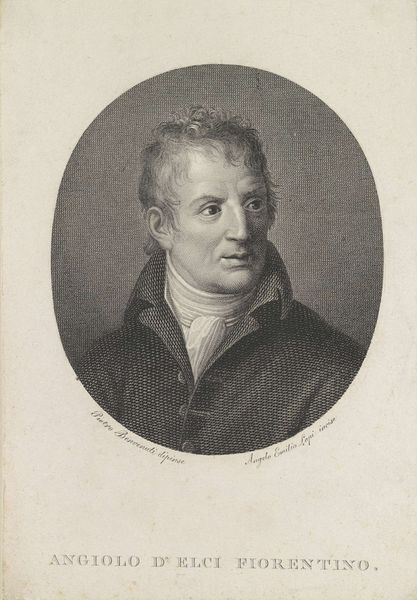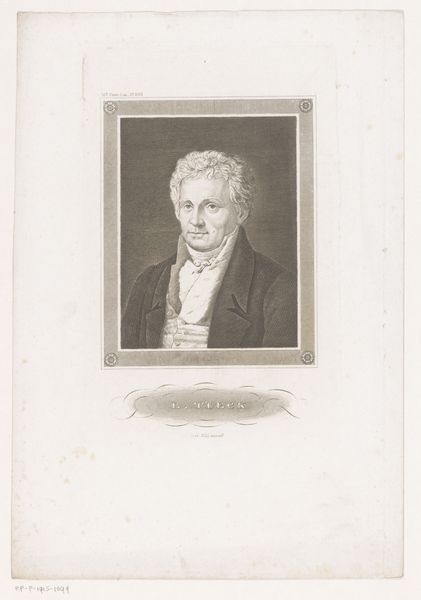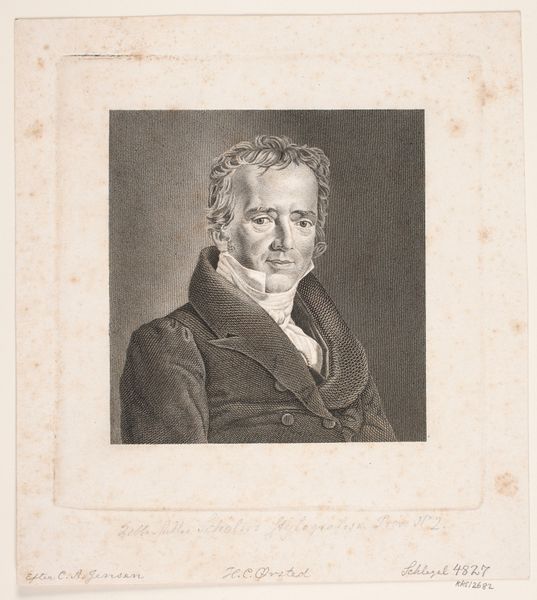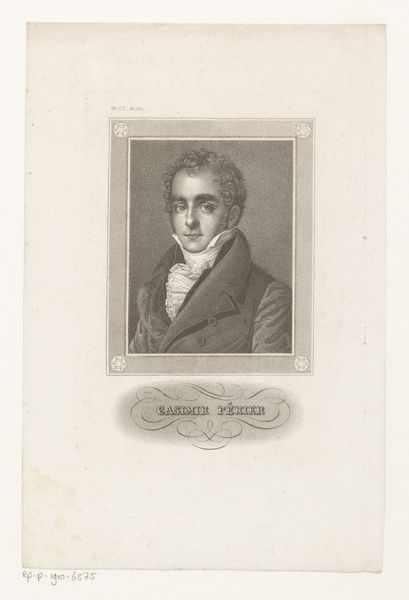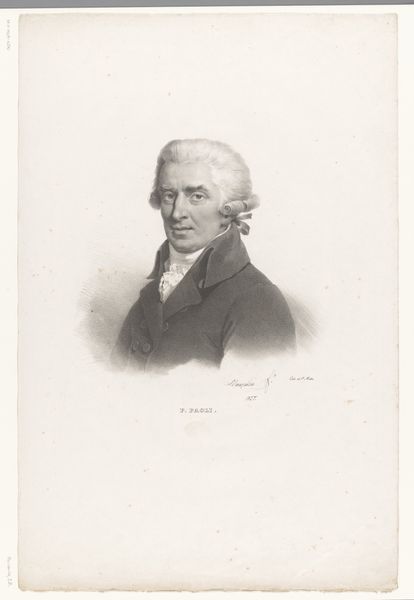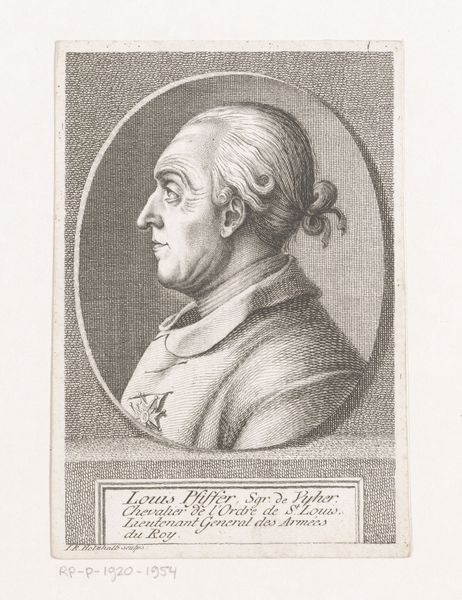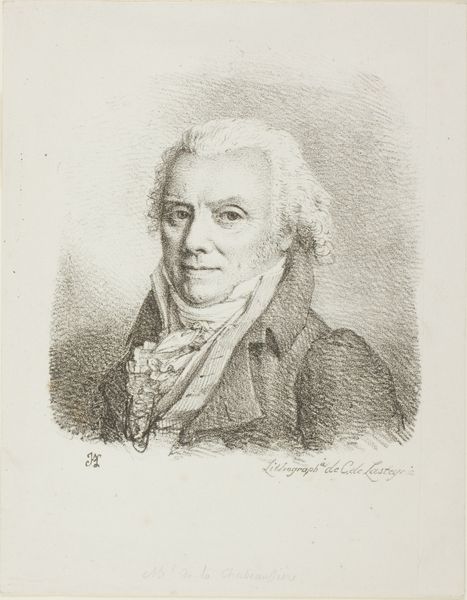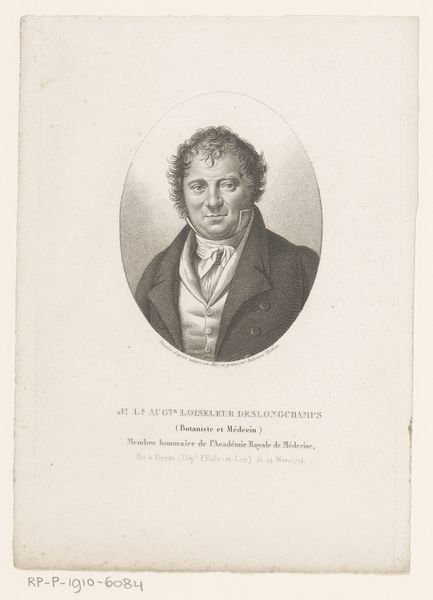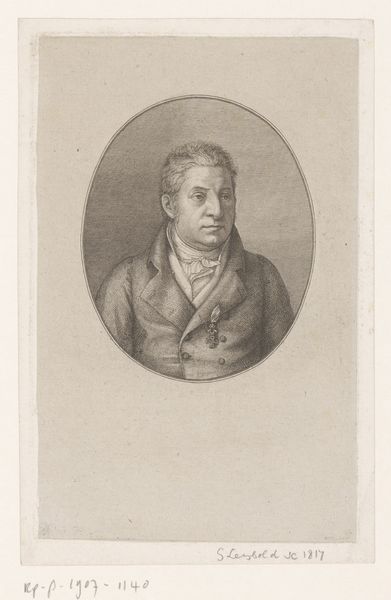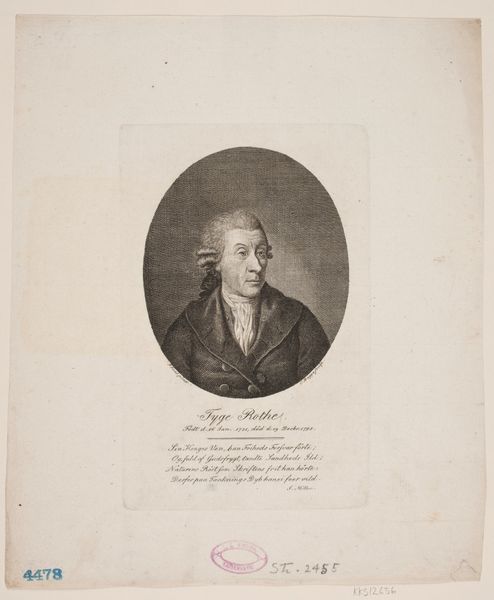
print, engraving
#
portrait
#
neoclacissism
# print
#
old engraving style
#
portrait reference
#
portrait drawing
#
engraving
Dimensions: 75 mm (None) x 61 mm (None) (billedmaal), 100 mm (height) x 75 mm (width) (bladmaal)
Curator: This engraving from between 1767 and 1824, found here at the SMK, is titled "Lauritz Kjellerup" and created by Andreas Flint. The artistry relies heavily on the delicate details rendered with incredible precision through the medium. Editor: The first impression is one of serene formality, isn't it? The oval composition, the poised figure, all encased in grayscale – it’s undeniably striking. I wonder, what symbolic weight did portraiture carry at the time? Curator: The stylistic qualities are quite typical of Neoclassical portraiture, you know. Note the balance and idealized features of Kjellerup – Flint’s treatment adheres quite stringently to the academic conventions. The linear quality is, perhaps, its defining trait. Editor: Indeed. He is presented as an upstanding man of reason. His tightly bound neckcloth almost certainly speaks to societal status, doesn't it? An echo of courtly decorum even within this intimate setting. Curator: Yes, his social positioning seems emphasized through considered compositional cues and subtle artistic flourish. Notice how Flint plays with contrasting textures -the smoothness of Kjellerup’s skin versus the detailed rendering of the wig and ruffled shirtfront. It creates depth. Editor: And the overall effect creates a mood of dignified contemplation. Looking at Kjellerup's calm demeanor I would surmise that a patron seeing it back in that era felt they understood not just his status but also the virtues he held. A subtle exercise of cultural memory through symbolic association, I'd venture to say. Curator: Your take aligns with the broader implications surrounding portraiture as both an artistic exercise and a signifier of social position. Ultimately, Flint offers a clear formal exercise with delicate compositional components. Editor: And I can’t help but wonder about Lauritz himself— what values did this engraving reflect for his contemporaries, and for us, looking back today?
Comments
No comments
Be the first to comment and join the conversation on the ultimate creative platform.
